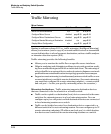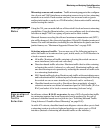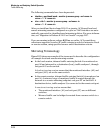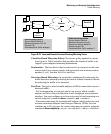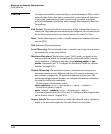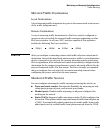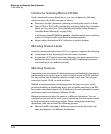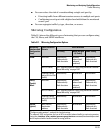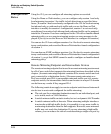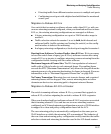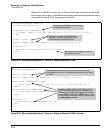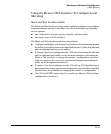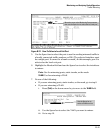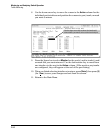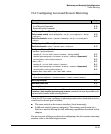
Monitoring and Analyzing Switch Operation
Traffic Mirroring
Configuration
Notes
Using the CLI, you can configure all mirroring options on a switch.
Using the Menu or Web interface, you can configure only session 1 and only
local mirroring in session 1 for traffic in both directions on specified inter-
faces. (If session 1 has been already configured in the CLI for local mirroring
for inbound-only or outbound-only traffic and you use the Menu or Web
interface to modify the session 1 configuration, session 1 is automatically
reconfigured to monitor both inbound and outbound traffic on the assigned
interfaces. If session 1 has been configured in the CLI with a classifier-based
mirroring policy or as a remote mirroring session, an error message is dis-
played if you try to use the Menu or Web interface to configure the session.)
You can use the CLI can configure sessions 1 to 4 for local or remote mirroring
in any combination, and override a Menu or Web interface-based configuration
of session 1.
You can also use SNMP configure sessions 1 to 4 for local or remote mirroring
in any combination, and override a Menu or Web interface-based configuration
of session 1, except that SNMP cannot be used to configure a classifier-based
mirroring policy.
Remote Mirroring Endpoint and Intermediate Devices
The remote mirroring endpoint that is used in a remote mirroring session must
be a ProCurve switch that supports the mirroring functions described in this
chapter. (A remote mirroring endpoint consists of the remote switch and exit
port connected to a destination device.) Because remote mirroring on a
ProCurve switch uses IPv4 to encapsulate mirrored traffic sent to a remote
endpoint switch, the intermediate switches and routers in a layer 2/3 domain
can be from any vendor if they support IPv4.
The following restrictions apply to remote endpoint switches and intermedi-
ate devices in a network configured for traffic mirroring:
■ The exit port for a mirroring destination must be an individual port, and
not a trunk, mesh or VLAN interface.
■ A switch mirrors traffic on static trunks, but not on dynamic LACP trunks.
■ A switch mirrors traffic at line rate. When mirroring multiple interfaces
in networks with high traffic levels, it is possible to copy more traffic to
a mirroring destination than the link supports. However, some mirrored
traffic may not reach the destination. If you are mirroring a high traffic
volume, you can reduce the risk of oversubscribing a single exit port by:
B-36



